A supply chain contains too many moving parts for entirely smooth sailing. Inevitably, your carefully laid out plans will get jostled by unexpected events.
In manufacturing, even the smallest ripples can grow into massive waves. Lose visibility and you may find yourself face-to-face with a tsunami.
Catching The Waves
Ideally, you want to act early, catching and addressing issues
before they grow too big.
Complete visibility and control is tough even when you own the entire process, and who does that these days? The question is, how do you attain practical oversight of bits you have entrusted to your contract manufacturer.

This is the answer:

You collect information
constantly and in real-time
Some of it is sent by the CM’s teams (engineering, quality, and sales), audit teams, or customers. However, the bulk of this data is gathered automatically and in real time from multiple sources including quality management systems and ERP systems.

The data is quickly sifted
through and analyzed
The information is measured against previously agreed upon KPIs, such as adherence to the schedule. CM sales and planning teams will communicate status updates with clients to ensure there are no surprises throughout the production process.

Alerts are raised &
alternatives strategies
are crafted
CM teams will work with their client partners when a potential issues arises to ensure all information has been shared and considered so immediate action can be taken to manage production blockers and potential quality issues.
The Problem With ‘Monitoring’
It makes sense, doesn’t it? So what still stands in its way?
Perhaps it’s that term, ‘constant monitoring’ that raises the common objections: It sounds like a lot of work; do you even have someone on your team who can take on this role; and how will it affect your relationship if your CM feels micromanaged?
Let’s break down these objections.

It’s too much work
The most time-consuming and complex tasks are automated. A good CM will already have systems in place for you, with the tools and software to consolidate, analyze and present data gathered from quality management systems, ERP, feedback from engineering and development teams, input from procurement, labor and environmental audits, and more.

You don’t have (or can’t spare) that one
point person to handle all issues
Nor should you. The best results come from dedicated teams. For speediest reaction time, we encourage our clients to break teams down by focus: operational, tactical, and strategic.
- Operational teams consist of people who are hands-on in day-to-day work (engineers, buyers, planners, etc.). This group will receive the most frequent updates (in real time over the project portal and in weekly or bi-weekly reports).As the first to hear about most events, the operational team decides whether they can handle or need to escalate an issue.
- Tactical teams are made up of managers and team leaders that meet monthly or quarterly to ensure continuous improvement. Then, when issues do arise, they decide on a course of action, such as whether it is necessary to form a crisis team to expedite a solution.
- Strategic teams are senior managers (C-suite executives, managing directors, quality directors, etc.) and meet once or twice a year. They act upon tactical team recommendations for business improvements between CM and OEM.
Each team determines the most useful way to receive updates. Naturally, reports to the operational team will be the most detailed, whereas the tactical and strategic teams may work off progress charts, balanced scorecards and improvement proposals.

Your CM will not like it
A CM that can’t or won’t make their progress visible flashes a big warning sign. Constant monitoring is essential to minimizing delays and accrued costs that result from problems that are identified too late. Why wouldn’t your CM welcome every opportunity to do their best work for you?
The Win-Win of Constant Monitoring
A good CM partner rolls out the red carpet for transparency, feedback and open communication because of their clear benefits:

Encouraging quick reaction to an issue for a faster solution.

Cascading improvement as tactical teams listen to operational teams on the ground. In turn, the tactical team uses learning points to present recommendations to the strategic team for overall, long-term enhancements.

Recognizing good work is a powerful motivator. Remember that feedback can be good as well as bad, and to your CM’s teams, a stellar scorecard is its own reward.

The technologies and processes exist to give you full visibility over your CM’s progress to keep your project on track. Curious to learn more about how Providence facilitates transparency and strives for constant improvement?
to get in touch.
Would you like a copy of this post to share?
Other Featured Resources
About Providence Enterprise
Providence Enterprise is a Hong Kong medical device contract manufacturer of Class I and II medical devices with manufacturing in China & Vietnam. We specialize in electro-mechanical assemblies and high-volume disposables. We are FDA registered and ISO 13485, ISO 14971, ISO 14001, ISO 27001 certified. Our capabilities include fabricating tooling for silicone rubber and injection molded plastics, clean room injection molding, electronics, clean room assembly, and sterilization.















































